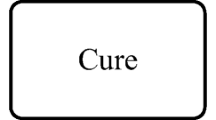Abstract
In aeronautics, the decreased density of structural components is a major factor to consider in order to satisfy economic, environmental, and technical requirements. Using composite materials is justifying good weight to mechanical strength compromise. Mechanical strength depends on shapes, dimensions, and materials defined at the design stage and in manufacturing and assembling process of the part. In this article, a general method is proposed to evaluate the performance of the design choices based on the failure risk of an assembled part. This evaluation integrates manufacturing deviations from the shaping operation (resin transfer molding). Three criteria are derived from numerical simulations of RTM process and assembly phase. These criteria assist the designer early in the design cycle to appreciate the consequences of manufacturing choices on the mechanical strength of an assembled part. The approach will be applied to an airplane component.
Similar content being viewed by others
References
Kassapoglou C (1999) Minimum cost and weight design of fuselage frames: part a: design constraints and manufacturing process characteristics. Compos A 30:887–894
Mouton S, Teissandier D, Sebastian P, Nadeau JP (2010) Manufacturing requirements in design: the RTM process in aeronautics. Compos A 41:125–130
Cid G, Thiebaut F, Bourdet P, Falgarone H (2007) Geometrical study of assembly behaviour, taking into account rigid components deviations, actual geometric variations and deformations. In: Davidson JK (ed) Models for computer aided tolerancing in design and manufacturing. ISBN 978-1-4020-5437-2, Springer, pp 301–310
Dong C (2003) Dimension variation prediction and control for composites. Phd thesis, the Florida State University College of Engineering
Li J, Yao XF, Liu YH, Chen SS, Kou ZJ, Dai D (2008) Curing deformation analysis for the composite T-shaped integrated structures. Appl Compos Mater 15:207–225
Satish Bapanapalli K, Lloyd Smith V (2005) A linear finite element model to predict processing-induced distortion in FRP laminates. Compos A 12:1666–1674
Fernlund G, Poursartip A, Twigg G, Albert C (2003) Residual stress, spring-in and warpage in autoclaved composite parts. Department of Metals and Materials Engineering, The University of British Columbia
Ratle F, Achim V, Trochu F (2009) Evolutionary operators for optimal gate location in liquid composite moulding. Appl Soft Comput 9(2):817–823
Jiang S, Zhang C, Wang B (2002) Optimum arrangement of gate and vent locations for RTM process design using a mesh distance-based approach. Compos A 33(4):471–481
Palardy G, Hubert P, Haider M, Lessard L (2008) Optimization of RTM processing parameters for class A surface finish. Compos B 39(7–8):1280–1286
Leclerc JS, Ruiz E (2008) Porosity reduction using optimized flow velocity in resin transfer molding. Compos A 39(12):1859–1868
Luo J, Liang Z, Zhang C, Wang B (2001) Optimum tooling design for resin transfer molding with virtual manufacturing and artificial intelligence. Compos A 32:877–888
Durai Prabhakaran RT, Babu BJC, Agrawal VP (2006) Design for ‘X’-abilities of RTM products—a graph theoretic approach. Concurr Eng Res Appl 14(n°2):151–161
Hashin Z (1983) Analysis of composite materials. A survey. J Appl Mech 50:481–505
SAMCEF User’s Manual 12.1 (2007) Hashin criteria. Samtech
Pam RTM user’s guide and tutorials (2009) ESI Group
Author information
Authors and Affiliations
Corresponding author
Rights and permissions
About this article
Cite this article
Mouton, S., Ledoux, Y., Teissandier, D. et al. Composite part design based on numerical simulation of the manufacturing process. Int J Adv Manuf Technol 55, 421–431 (2011). https://doi.org/10.1007/s00170-010-3107-3
Received:
Accepted:
Published:
Issue Date:
DOI: https://doi.org/10.1007/s00170-010-3107-3




